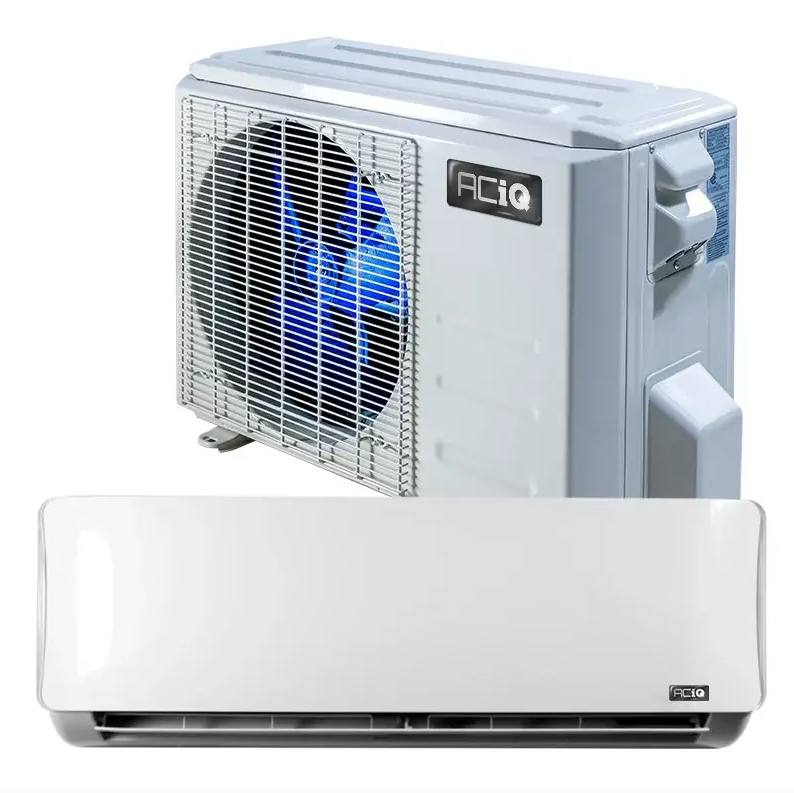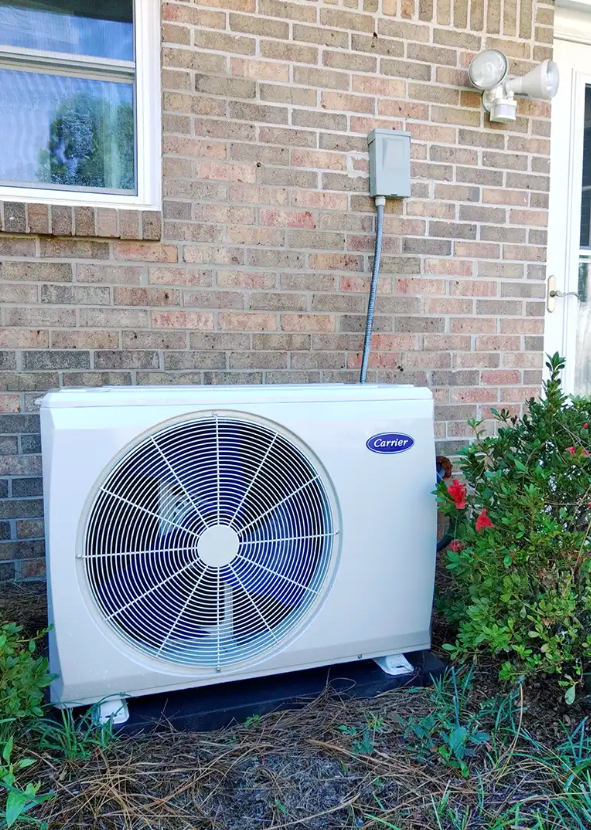Table of Contents
Mini Split Systems are a fantastic way to maintain a comfortable temperature in your home without requiring extensive ductwork!

They are energy-efficient, versatile, and offer precise climate control. However, one common concern many homeowners face is the aesthetic challenge of integrating these units seamlessly into their living spaces.
Picture yourself in a setting where you’re savoring the perfect indoor climate with the peace of mind that your home’s interior aesthetics remain flawlessly preserved. Isn’t that the ideal blend of comfort and style? Join us as we explore creative ways on how to hide a mini split and welcome a harmonious living space that caters to your comfort and style preferences.
Hiding a Mini Split System: Why It’s Crucial for Aesthetics and Functionality
Hiding a mini-split system with an indoor unit and an outdoor condenser is important for a few simple reasons. First, it makes your place look better. Even though they work well, mini-split units might not match how you want your place to look. They can be distracting and not fit with your style. Hiding them helps keep your home or building looking nice and put together. Plus, hiding these units gives you more space for furniture and decorations.
Improving Airflow and Safety
Also, hiding mini-split units is about more than just about looks. It also makes your place more comfy and keeps the equipment safe. When you hide the units, air can flow better, and the temperature in your space stays even.
This means you feel better in your place. By hiding the units, you protect them from accidents and damage, so they last longer and work better. So, hiding a mini-split system isn’t just about making things look good – it also makes your place comfier and keeps your HVAC system working well.
Considerations When Hiding a Mini Split System
Hiding a mini split system involves making them less visible or blending in with the surrounding decor. Whether you want to blend it into your decor or protect it from the elements, here are considerations when hiding a mini-split system:
Accessibility for Proper Maintenance
- Proper maintenance is crucial for your mini split system’s efficient and long-term operation; having easy access can reduce the time and effort in the long run. Additionally, accessible units make it simpler for technicians to perform any necessary repairs or inspections, maintaining peak performance for your system throughout its entire lifespan.
Proper Ventilation Matters
- In addition to accessibility, it’s also crucial to keep the area around it free from blockages. This way, the unit can get enough fresh air to cool itself properly. If the airflow is restricted, your system might work less efficiently and even overheat. So, remember to have good ventilation around your mini split unit to keep it running smoothly and lasting longer.
Materials That Fit Your Home’s Style
- Choose materials that match the look of your home inside or outside. Some standard options are lattice screens, wooden enclosures, trellises, or outdoor cabinets. Ensure these materials can withstand different weather conditions and last a long time. This way, your mini split unit will blend in with your surroundings, making it look good and work well.
Proper Placement for Effective Air Circulation
- Place the hiding structure strategically to maintain proper air circulation around the unit. Ensure it doesn’t obstruct the airflow or interfere with the unit’s operation. When you do this right, the cover can make your unit look better without messing up how it cools or heats your space.
Camouflage Techniques
- Adding landscaping elements like shrubs, plants, or vines can be a great way to hide your mini split system. Just remember to choose plants that won’t block the airflow or demand a lot of upkeep. This approach can help your mini split blend in with the outdoor environment, enhancing aesthetics without causing airflow issues or additional maintenance tasks.
Reducing Mini Split Noise
- Mini-split systems can produce some noise during operation. Remember that sound can bounce off walls and structures when creating your hiding structure, possibly making it more noticeable. To maintain a quieter and more discreet Mini Split system, consider using materials that absorb or dampen sound vibrations, and plan the placement of your hiding structure to reduce sound reflection.
Ensuring Adequate Clearance
- Maintain proper space around your Mini Split unit to prevent debris, leaves, or other obstructions from blocking the condenser or evaporator coils. This ensures your system can work effectively, providing comfort and lasting longer without interruptions.
Durability and Weather Protection
- When you pick a hiding structure, think about the weather in your area, like rain, snow, sun, and wind. Depending on where you live, you might need to do some things to protect both the mini-split system and the enclosure.
Expert Help for Hiding Your Mini Split
- Getting help from a professional HVAC technician or contractor who knows about mini-split systems is a good idea. They can assist you in choosing the right way to hide your unit while making sure it works correctly and safely. These experts understand your specific needs and can ensure that the hiding structure looks good and doesn’t affect your system’s performance.
Consider Future Upgrades
- Think about potential system upgrades or replacements in the future. Your hiding solution should allow for easy access to the unit and accommodate system size or configuration changes.

Finding the Right Location to Hide Your Mini Split
Here are steps to help you determine the ideal location for hiding your mini split:
Evaluate the Room Layout
- Assess the layout of the room where you want to install the mini split. Look for areas that would be least obtrusive while providing efficient cooling or heating. Consider the natural airflow in the room and choose a spot that won’t block doors, windows, or other important features. This way, you’ll maintain a pleasant and functional space while enjoying the benefits of your mini-split system.
Ideal Wall Placement
- When installing a mini split, pick a wall in the middle of the room where the air can spread evenly. Don’t put it behind big furniture or in busy areas because it also can’t work there. Also, make sure nothing is blocking it, like curtains, so it can do its job correctly and keep your room comfortable.
Avoid Direct Sunlight
- To make your mini split air conditioner work better, try to install it on a wall that doesn’t get direct sunlight during the day. This helps it use less energy and last longer.
Ideal Installation Height
- Mini Splits are typically installed between 6 to 7 feet above the floor. This height provides even air distribution and allows for easier installation and maintenance.
Concealment Options for the Indoor Unit
- You have multiple design options to hide your mini split’s indoor unit. Consider custom cabinetry for ventilation, incorporate it into wall art or decor, or opt for a recessed installation to minimize its visibility while maintaining functionality.
Secure Wall Mounting
- Follow the instructions to mount the indoor unit securely on the wall to avoid noise issues. Keep it level, use anti-vibration pads if needed, and maintain clearances. Regular maintenance helps, too.
Selecting the Right Size for Hiding Your Mini Split System
Getting the size of your mini split system right is important when you want to hide it in your home. When you choose the correct size, you can use a smaller, easier indoor unit to hide. The outdoor unit can also be smaller and hidden better with plants or a cover. So, picking the right size means a more hidden and efficient mini split that fits well in your home.
